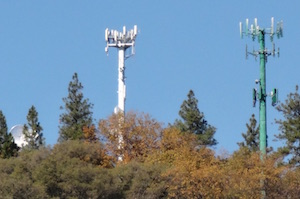
A pretty simple decision.
The California Environmental Quality Act – CEQA – has evolved into a powerful tool for Nimbys and others who want to say no to infrastructure projects or other construction work. The seemingly endless possibilities for reviews, questions and appeals can stall projects for years, with no discernible benefit to either the environment or communities. Except for people who simply want to delay the process, in the hopes of killing projects drip by drip.
Assembly bill 57, which was passed by the legislature and signed by the governor last week, puts a time limit – a shot clock – on that process for wireless infrastructure, 150 days for new facilities and 90 days for add ons to existing ones. It allows for limited extensions of those deadlines, but there’s no opportunity to stall it indefinitely, without going to court. The staff analysis done for the California senate points out that there’s no exception for CEQA…
AB 57 is silent on several aspects relating to [pausing] the shot clock, including whether the shot clock is [paused] for:
1)Environmental review pursuant to CEQA; 2)Public notice as required by the state’s open meetings laws-as opposed to the notice that the applicants themselves are required to provide; 3)Appeals of decisions on wireless facilities to the legislative bodies of cities and counties.
However, local governments may not be able to complete those activities before an application is deemed complete under AB 57. As a result, they face the difficult choice of cutting short these important processes, reducing the time that they have to review applications, or denying permits and facing litigation.
Cutting processes short and reducing the time for review is actually the point of the law. Towers are not complicated and there’s only limited scope – legally – for a local agency to deny a permit or impose conditions. Bolting new equipment on – within the defined limits – should be a no-brainer.
The real question is: what happens if the shot clock runs out and environmental reviews aren’t complete?
The law simply says “a collocation or siting application for a wireless telecommunications facility…shall be deemed approved if…the city or county fails to approve or disapprove the application within a reasonable period of time”, in other words within the 150/90 day shot clock rule. At that point, any loose ends, environmental or otherwise, are deemed tied off.
The plain English interpretation won’t fly right off the bat, but the inevitable court fights will begin with the presumption that permits are deemed approved. That’s a big improvement on the eternal litigation we have now.
If it works as hoped, it could be a model for other types of infrastructure projects, broadband and otherwise.
